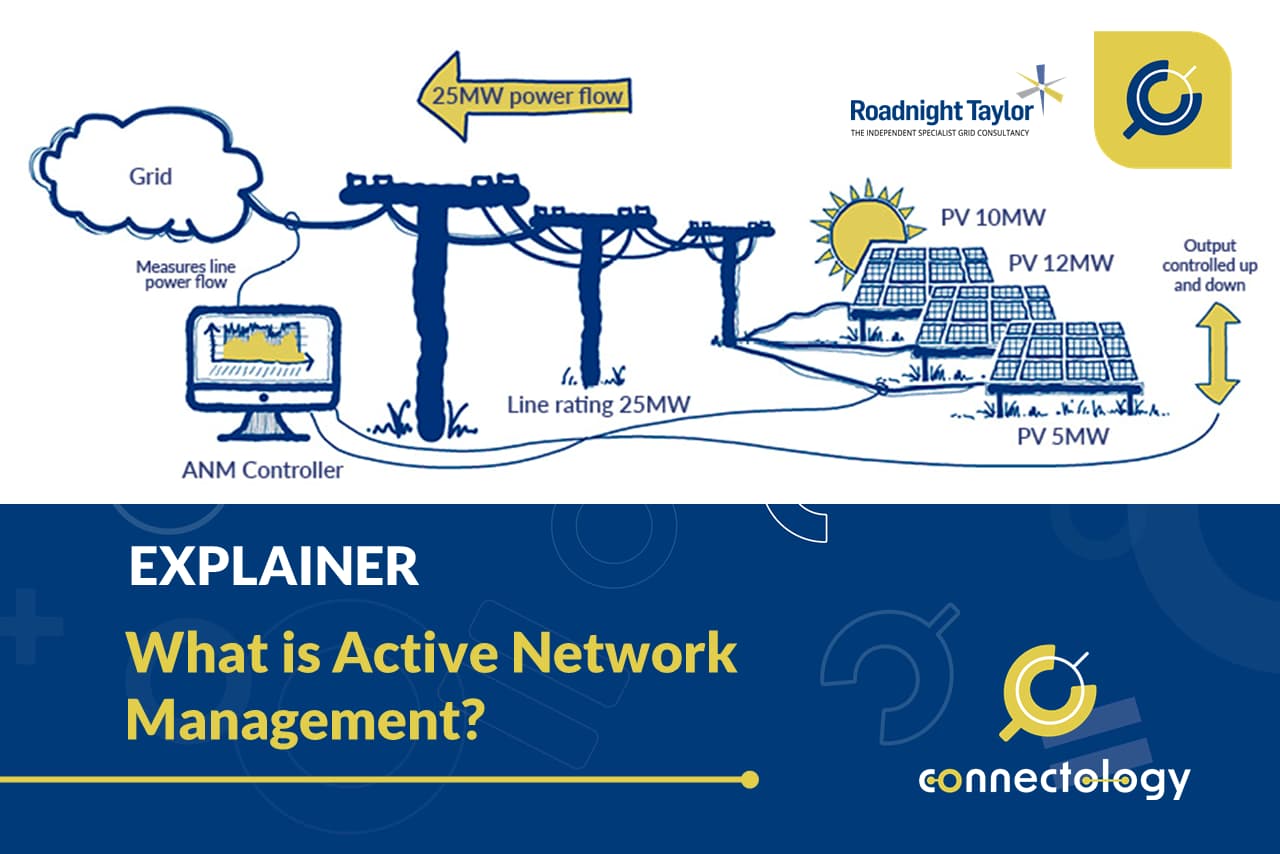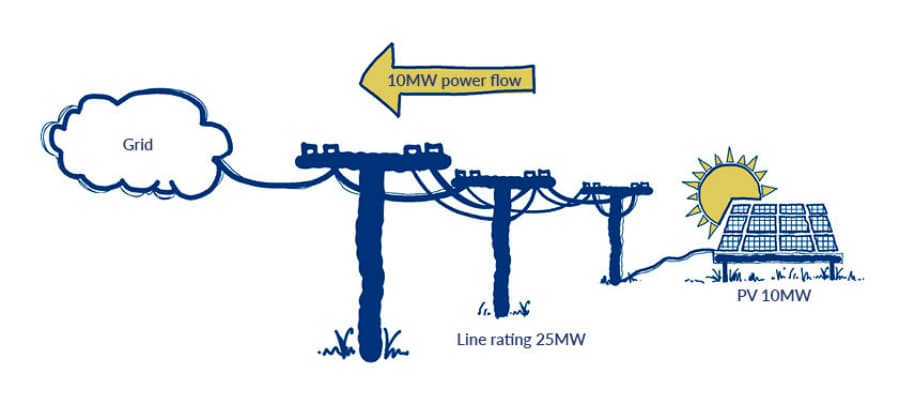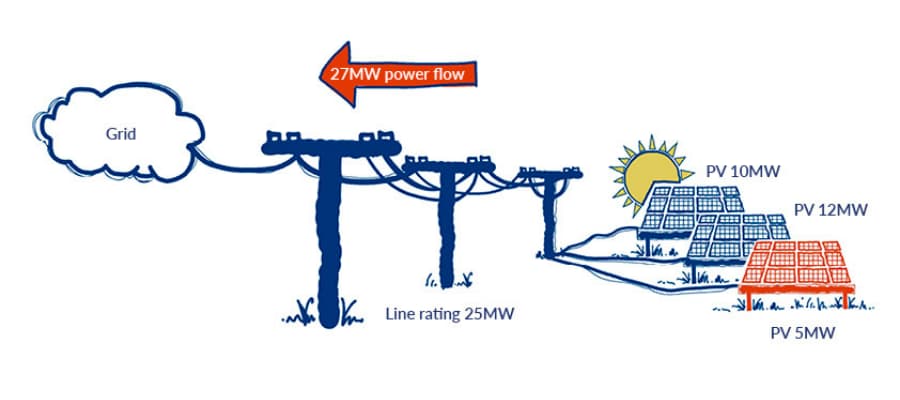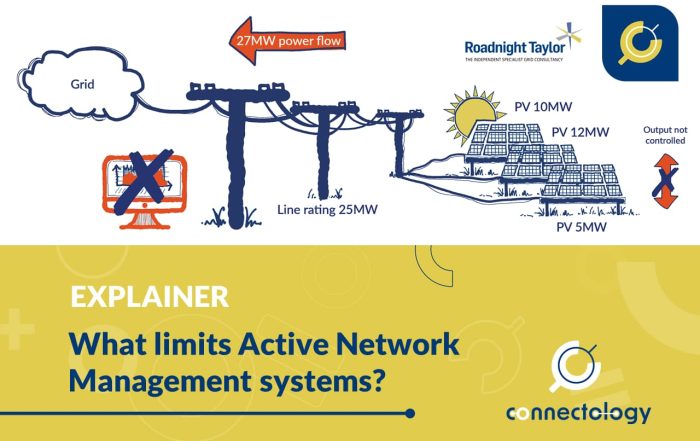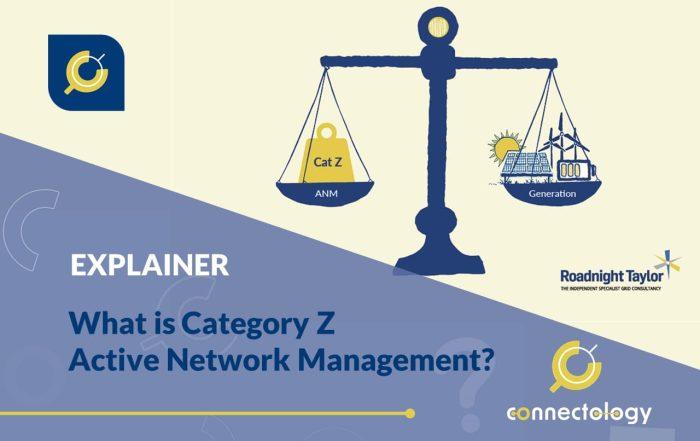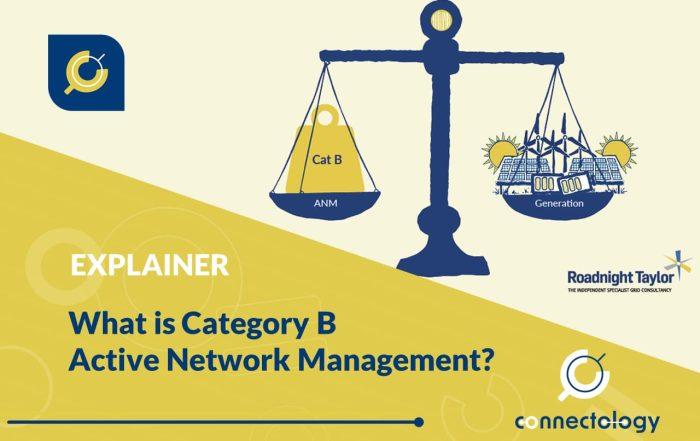What is Active Network Management?
Active Network Management (ANM) is typically used by grid companies to control energy generating schemes, so they can avoid having to upgrade the network, which costs a lot of money. ANM keeps down the connection price for customers, but the flip side is that generators will have their output capped.
Article by Pete Aston – acknowledged expert in ANM systems
Pete joined Roadnight Taylor from Western Power Distribution (WPD), the UK’s largest Distribution Network Operator (DNO) and world-leading pioneers of ANM. Heading up WPD’s system planning team, Pete was responsible for the design of, and all connections to, its extra-high voltage networks. He was also responsible, amongst other things, for overseeing the roll out of ANM across all four of WPD’s licence areas.
First written: 17 November, 2021. Last review: 31 July, 2025

An Example of Active Network Management (ANM)
A solar farm within the rating of the line
In the network below, a solar farm (Photovoltaic = PV = solar) with an output of 10MW is connected to an overhead line with a rating of 25MW. The solar farm is within the rating of the line, so no problems.
Additional solar farm connection within the rating of the line
Another solar farm wants to connect to the line and this one is 12MW. So 10MW + 12MW = 22MW, which is less than 25MW, so again no problems.
Additional solar farm connection not within the rating of the line
Another solar farm wants to connect to the line and this one is 5MW. 10MW + 12MW + 5MW = 27MW, which is higher than the rating of the line.
Grid Company Options and ANM
When the solar farm output is higher than the rating of the line, a grid company has three options.
- Replace the existing line with a bigger one.
- Add another line.
- Use ANM.
Options 1 and 2 could cost a lot of money. Option 3 – using ANM – can be comparatively low cost. If ANM is used, the output of the third solar farm is controlled up and down so that the power flow through the line never goes above 25MW.
What it means for some connections
For the 5MW solar farm, this means that sometimes it won’t be able to export all of its 5MW into the grid. When the other two solar farms are at maximum output, the 5MW solar farm will only be able to export 3MW of power. This controlling of output is called curtailment – and of course for a generator means that they won’t be able to sell as much electricity and make as much money.
A generator will therefore need to make a decision as to whether it’s best to trigger the grid upgrade – known as a network reinforcement – which potentially costs a lot of money and takes a long time; or whether they go for an ANM connection, to save on the upgrade costs, but lose out on some energy sales.
There is also the effect of the differences between output profiles of different generation technologies to take into account here. The example above could be changed to be a 10MW solar farm, a 12MW windfarm and a 5MW battery. Whilst on paper the maximum combined output is still 27MW, in reality the solar farm won’t often be at full output when it’s really windy, and the battery won’t always be wanting to export its full output to the grid when it’s really sunny. This effect is called diversity, where different technologies have different output profiles. In this scenario, the 5MW battery would experience less curtailment than in the first example where all the generators were solar.
What else is subject to ANM
It’s not only overhead lines that can be subject to ANM: underground cables and transformers can also benefit from the use of an ANM system instead of upgrades being triggered. And as well as ANM benefitting generators, some ANM systems are starting to be available which can control large demand customers, such as electric vehicle charging hubs and battery storage schemes.
What it means for your connection
Not every part of the grid has ANM available, but it is being rolled out on more and more of the network across the country. It is important to be able to understand whether an ANM connection is available, and whether it might be suitable for your proposed connection.
ANM systems have both technical and commercial limits. Accordingly, network operators are developing different categories of ANM systems, starting with National Grid Electricity Distribution (NGED) and its Category Z ANM and Category B ANM.

